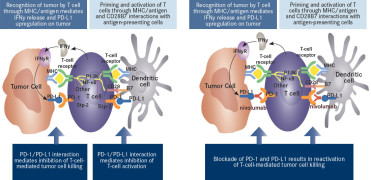

Īlthough the mechanisms underlying the action of trastuzumab are still not fully determined, its clinical benefit is attributed to internalization and down-regulation of cell surface HER2, preventing the activation of AKT by reducing signaling in the PI3K-PTEN pathway, cell cycle arrest in G 1, HLA-I-restricted antigen presentation of HER2, inhibition of angiogenesis and evoking antibody-dependent cellular cytotoxicity (ADCC). Trastuzumab is currently used for treatment of both metastatic and early-stage breast cancer world-wide. A breakthrough in medical oncology was the finding that trastuzumab, a recombinant humanized monoclonal antibody against the extracellular domain of HER2, showed a significant anti-tumour effect in a phase III clinical trial. Its overexpression occurs in 15 to 20% of primary human breast cancers and is associated with aggressive growth and poor clinical outcomes.

HER2 (ErbB2) is a member of the epidermal growth factor receptor (EGFR) family of receptor tyrosine kinases. T-DM1 was found effective even on breast cancer cell lines with moderate HER2 expression levels and cross-resistance to trastuzumab and lapatinib (MDA-453 and JIMT-1). Our results suggest mitotic catastrophe as a previously undescribed mechanism of action of T-DM1. Histologically, the cellular response to T-DM1 consisted of apoptosis and mitotic catastrophe, the latter evidenced by an increased number of cells with aberrant mitotic figures and giant multinucleated cells. Outgrowth of JIMT-1 xenograft tumours in SCID mice was significantly inhibited by T-DM1. T-DM1 also evoked antibody-dependent cellular cytotoxicity (ADCC) similar to that of trastuzumab. T-DM1 was strongly growth inhibitory on all investigated HER2-positive breast cancer cell lines in vitro. The xenograft samples were investigated using histology and immunohistochemistry. Severe Combined Immunodeficient (SCID) mice were inoculated with trastuzumab-resistant JIMT-1 cells to investigate the tumour inhibitory effect of T-DM1 in vivo. Trastuzumab- and T-DM1-mediated antibody-dependent cellular cytotoxicity (ADCC) was analysed by measuring the lactate dehydrogenase released from the cancer cells as a result of ADCC activity of peripheral blood mononuclear cells. MethodsĪlamarBlue cell-proliferation assay was used to determine the growth response of breast cancer cell lines to trastuzumab and T-DM1 in vitro. The nine cell lines studied included UACC-893, MDA-453 and JIMT-1, which are resistant to both trastuzumab and lapatinib. We tested the efficacy and mechanisms of action of T-DM1 in nine HER2-positive breast cancer cell lines in vitro and in vivo. To overcome this, trastuzumab-DM1 (T-DM1), a newer, more potent drug has been introduced. Despite encouraging clinical results, a significant fraction of patients are, or become, refractory to the drug. Trastuzumab is widely used for the treatment of HER2-positive breast cancer.


 0 kommentar(er)
0 kommentar(er)
